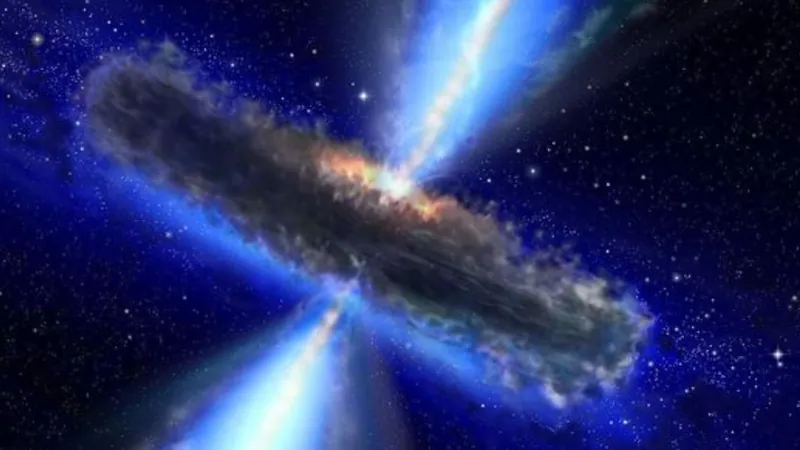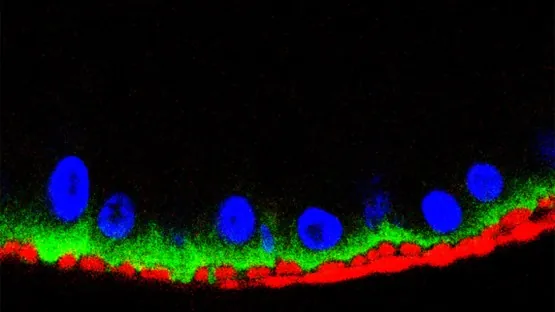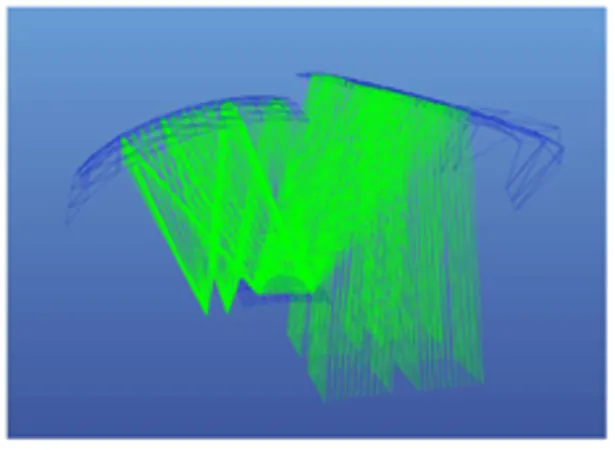
How Quasars Fueled by Black Holes are Silent Killers of Nearby Galaxies in the Ancient Cosmos
2024-09-25
Introduction
A groundbreaking study by astronomers utilizing the expansive Dark Energy Camera (DECam) has revealed astonishing insights into the behavior of supermassive black-hole-powered quasars in the early universe. It turns out, these cosmic entities are not just luminous beacons in space; they've been wreaking havoc on their galactic neighbors.
Quasars as 'Noisy Neighbors' and Their Impact
The research team found that quasars, often referred to as "noisy neighbors," emit powerful radiation that effectively stifles star formation in nearby galaxies, causing these galaxies to "die" before they can fully develop. As a consequence, many companion galaxies orbiting these quasars remain too faint and small for existing telescopes to detect, leading to gaps in our understanding of the cosmos.
Clarifying Contradictions in Previous Studies
This revelation connects dots regarding previous studies that reported a confusing array of densities in the early universe. Some indicated that galaxies were densely packed alongside quasars, while others suggested a stark absence of neighboring galaxies. The researchers focused on the quasar VIK J2348–3054, located approximately 12.8 billion light-years from Earth, using data from the Atacama Large Millimeter Array (ALMA) to establish its precise distance.
The Largest Survey of an Early-Universe Quasar
With VIK J2348–3054 as their focal point, the team conducted the largest survey around an early-universe quasar to date. DECam's impressive three-square-degree field of view allowed them to search vast expanses of space while its specialized narrowband filter helped isolate the companion galaxies. According to Trystan Lambert, the team leader and a postdoctoral researcher at the University of Western Australia, this study represented a "perfect storm" of conditions, combining optimal quasar selection and advanced observational tools.
Understanding the Nature of Quasars
Quasars epitomize some of the universe's most brilliant light sources, fueled by supermassive black holes often millions of times heavier than our sun. The radiation emanates from material in accretion disks surrounding these black holes, where gas and dust are heated to extreme temperatures, emitting radiation that outshines entire galaxies. Such intense energy output requires an abundance of material nearby; thus, it was presumed quasars reside in the densest cosmic regions.
Discrepancies in Galaxy Neighborhoods
However, Lambert and his colleagues identified 38 companion galaxies around VIK J2348–3054, some as distant as 60 million light-years, yet astonishingly found none within a 15 million light-year radius. This discrepancy may clarify previous contradictory findings in quasar studies. Research indicating empty regions around quasars may have concentrated on their immediate vicinity, where the energy from quasars has impeded star formation. In contrast, studies showing crowded conditions might have scanned broader cosmic landscapes without focusing on these critical close-in areas.
The Role of Lyman-alpha Radiation
The team's methodology hinged on measuring Lyman-alpha radiation—an indicator of active star formation and thus a sign of younger, smaller galaxies nearby. Surprisingly, they propose that the powerful radiation emitted by quasars heats the gas in neighbor galaxies, preventing it from cooling and collapsing under gravity to form stars. This suggests that many companion galaxies might exist but remain undetectable due to their dimness and size.
Conclusion and Future Implications
In conclusion, Lambert's team highlights that some quasars could be detrimental to the development of nearby galaxies. “Stars in galaxies need cold gas to form,” he stated. “Bright quasars can heat this gas, preventing it from collapsing, thus starving neighboring galaxies of the ability to grow.” As we delve deeper into the universe's past, these findings not only reshape our understanding of quasar neighborhoods but also challenge our perceptions of cosmic evolution. Will future observations reveal more secrets of these stellar giants, or does the night sky hold even darker mysteries yet to come? Stay tuned!



 Brasil (PT)
Brasil (PT)
 Canada (EN)
Canada (EN)
 Chile (ES)
Chile (ES)
 España (ES)
España (ES)
 France (FR)
France (FR)
 Hong Kong (EN)
Hong Kong (EN)
 Italia (IT)
Italia (IT)
 日本 (JA)
日本 (JA)
 Magyarország (HU)
Magyarország (HU)
 Norge (NO)
Norge (NO)
 Polska (PL)
Polska (PL)
 Schweiz (DE)
Schweiz (DE)
 Singapore (EN)
Singapore (EN)
 Sverige (SV)
Sverige (SV)
 Suomi (FI)
Suomi (FI)
 Türkiye (TR)
Türkiye (TR)